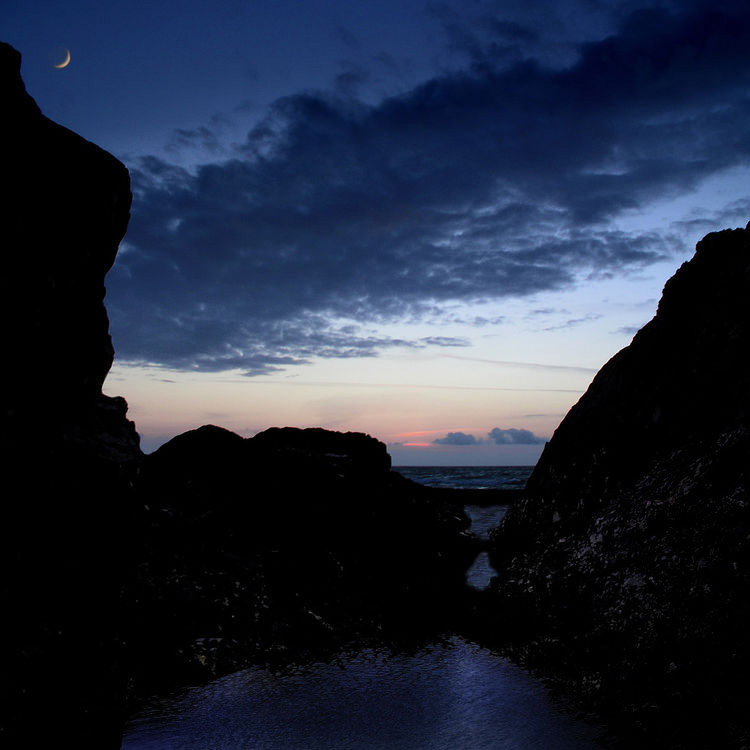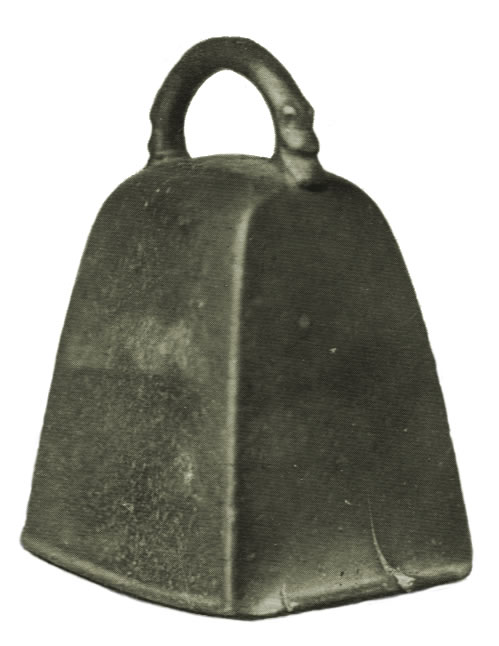Pilgrims over the centuries have found solace and peace in this House of God, and indeed, many modern pilgrims, present day visitors to the Lleyn Peninsula, have made it a part of their holiday to visit St. Gwynhoedl’s. There seems to be a continuity within these ancient walls, the past and the present mingle to give a fragrance which somehow enriches all who stop here. This House is an early example of the Celtic response to God and His sovereignty over the whole of life. They came here in the early sixth century and erected an altar; around this altar the Christian family settled. The settlement is by the river, a source of water for sustenance and baptism. It is also near the sea, as the sea was a “natural highway” to travel between these islands, Ireland and the Continent. The Celts were keen travellers in search of knowledge.
Gwynhoedl was one of the earliest Saints of Llyn. In the Church there is a stone connected with Gwynhoedl which is also reputed to be his tombstone. It was discovered during the renovations of 1940, when the plaster was removed off the walls. It can be seen in the south wall of the Church, and on it is cut a Celtic Cross (ring cross). No doubt that the cross was originally painted, as traces of red colouring are still visible; this stone has been dated by eminent historians around the year 600 A.D.
Another relic of those early years is a bronze sanctus bell. It dates back to the 6th century, and is used in standard books as an early example of metal work. Unfortunately the original bell is no longer in the Church, but can be seen at the National Museum in Cardiff. It was removed during the renovations here in the l9th century to Madryn Castle, and only came to light again at the auction in Madryn in 1910, when it was sold for £44 2s. Od. However, there is a detailed casting of it here now, which was presented to the Church a few years ago by the late Mr. W. J. Hemp, of Criccieth, an eminent antiquarian and a sound friend of this Church.
The original building was made of wattle, mud and timber, until Norman times when a stone building was erected. The first edifice was simple, being rectangular with a small window above the altar and a door in the west wall. During the Middle Ages the Shrine of Gwynhoedl became very popular and was one of the main halts on the Pilgrim’s Way to Bardsey Island. The field adjacent to the Church, and which belongs to Plas Llangwnnadl is called Cae Eisteddfa to this day, which means the place where the pilgrims would sit and rest.
This popularity made it necessary to enlarge the church, and so the south aisle was added and the arcade was built. A large perpendicular window was also placed in the east wall, and a smaller window in the south wall and also the doorway was built in the south wall as it is today.
The ascent of the Tudors to the throne of England resulted in a phase of enlarging churches in Wales, and so we have the same pattern in Llangwnnadl, when in 1520 the north aisle was added and another arcade built. Again a large window was built in the east wall and a smaller window placed in the north wall. In addition the old west door was blocked in and the small window in the east wall of the original building was removed to be inserted in the west wall of the new north aisle; traces of it can still be seen in this wall. It was replaced by a third perpendicular window which matched those in the south and north aisles. In time this northern part of the Church became the Parish School and served as such until the 19th Century.
In 1850 the Church was again renovated under the direction of the eminent architect Henry Kennedy. This resulted in the removal of the Old Chancel Screen, no doubt due to the influence of the Oxford Movement which stressed that the altar should be visible from all parts of the Church. Kennedy’s work lasted for 100 years, but in 1940 urgent repairs were again necessary. These were carried out through the goodwill and generosity of Mrs. Gough of Nanhoron, a pious and kindly lady who did so much for many of the Lleyn churches. She had a close connection with the parish, being a direct descendant of the Lloyds of Nantgwnnadl, now called Plas Llangwnadl. Further renovations were undertaken in 1963 when the seating and floor among other things were renewed. A valuable and interesting gift was the new church gate on which is wrought a Celtic Cross and bears the inscription ‘TY Dduw” (the House of God). It was made and gifted by Mr. W. Jones, village blacksmith at Aberdaron. Renovations to the roof were made again in the 1980s.
Perhaps the most interesting feature in the Church are the pair of Latin inscriptions on the pillars in the north Arcade: one records the burial here of St. Gwynhoedl-
S GWYNHOEDL IACET HIC
the other records the building of the Aisle in 1520
HEC EDES EDIFICATA EST IN ANO DNT IHRO
One peculiarity is the employment of the letters IHRO to represent Arabic numerals in the date, a passing fashion of first half of the 16th Century, which spread to this country from the Continent. On this pillar a mason’s mark can also be found. A grave stone by the door refers to the death of Griffith Griffiths, of Methlem, Gent, “who died in 1746 aged 93, he lived under nine sovereigns.” St. Gwynhoedl’s has been a faithful witness to God for over 1400 years.
The font is interestingly carved, its sides bear respectively a fleur-de lys, a rose of five petals, a shield bearing a cross and a crowned head and mitred head. The latter are significant as the crowned head is an attempt to resemble King Henry VIII and the mitred head is that of Bishop Skeffington of Bangor, who took a keen interest in church buildings and could well have been connected with some of the renovating here in the 16th Century. These heads serve as “visual aids” to remind all who enter the Church that they are citizens of two kingdoms. The roof timbers are 15th and 16th Century and it is interesting to note that all three sections of the Church are the same width. The Chalice and Platen which are still used are dated 1574.








